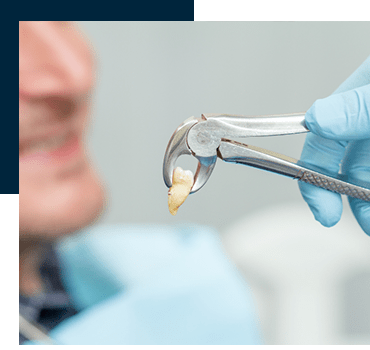Extraction is always our last option because we want to preserve your natural smile. However, our dental team will recommend removing a tooth if:

Another common reason for tooth extractions is infection. An infection inside of your tooth can often spread to the gums, jawbone, and the rest of the body if it’s left untreated. We must extract these heavily infected teeth to prevent more serious issues like bone damage and additional tooth loss from occurring.
Dental socket preservation is the process of filling fresh extraction sites with bone or synthetic graft material that promotes new bone formation immediately after tooth removal. What better time to promote new bone growth? The bone that supports the teeth has already suffered trauma caused by extraction and healing factors are being dispatched to the site via the blood supply, making it even easier for new bone to be generated.
After patients fully heal from extractions, it is not uncommon for the supporting alveolar bone to shrink 50% or more of its pre-extraction width. Once the tooth is removed, the surrounding socket remodels and resorbs because it no longer has a purpose. The main objective of a socket preservation graft is to prevent both the collapse of buccal-lingual bone width and the reduction of bone height as an extraction site heals, improving the quantity of bone available for dental implant stabilization.
Socket preservation can make it easier and quicker to place dental implants. Socket preservation techniques often eliminate the need for more invasive bone grafting surgery at a later time. Most patients are ready for implant placement 3 to 4 months after dental socket preservation. Having a separate grafting surgery is invasive and takes additional time for new bone to form before an implant can be placed.